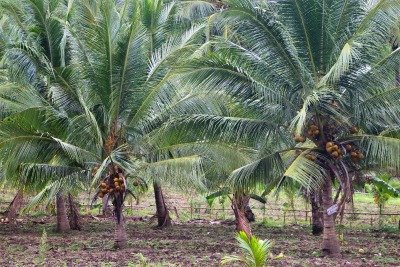Table ACC-3. List of agricultural crop commodities (with names starting P to Y) and their respective five top producers based on total tonnage for 2012 (extracted from FAOStat 2014).
Basic
Human Population Statistics Rationalize Agriculture
Figures on human population statistics generated by the United Nations, Department of Economic and Social Affairs, Population Division (UN-DESA-PD 2011) indicate a surging world population even with some countries posting negative growth (see table below).
After only four decades starting in 2010, it is estimated that in 2050 there will be an additional 2.41 billion (2,410,239,000) more people to feed.
Ensuring food supply means continuing crop and livestock agriculture and other food production systems including fisheries.
Consequently, exponential growth will be expected in the demand for water, energy, and other resources for agricultural, industrial, and domestic use.
What Countries Held the Record as Top Producers of Agricultural Crop Commodities in the World?
Shown in the table below are the five top producers of selected agricultural crop commodities as of 2012.
Rank 1 means having the highest tonnage while rank 5 refers to the fifth-highest producing countries.
This table was constructed from the FAOStat list of the top 10 and top 50 highest producers of food and agricultural commodities in the world.
To date, 2012 is the most recent entry of statistics.
This is the first of three pages providing information on the various agricultural crop commodities around the world and the five countries which, based on production statistics, are ranked as top producers of each commodity.
The crop commodities with names starting with letters A to C are listed alphabetically.
The Top 20 Food and Agricultural Commodities Produced in These Countries Around the World
Wonder what are the different food and agricultural commodities produced worldwide? Wonder which of these top the list and which country produces the most?
Which of these commodities are crop-based, that is, derived from agricultural crops?
What are the top commodities produced in, by way of example, the United States of America, United Kingdom, South Africa, India, Australia, and the Philippines?
Want also to know what possibly are the major crops in the world and in any country?
Seeking to shed light on these questions, I referred to the online lists provided by FAOStat, the statistics division of the Food and Agriculture Organization of the United Nations.
From its top 10 and top 50 lists, I made a table of the top 20 crop-based agricultural commodities in the world and in six selected countries.
The Top Crop-based Agricultural Import Commodities in the World and in These Six Countries
Table AIC-1. List of top 20 food and agricultural import commodities originating or processed from agricultural crops in the world and in selected six countries for 2011.
Top Crop-based Agricultural Export Commodities in the World and in These Six Countries
Table AEC-1. List of top 20 food and agricultural export commodities originating or processed from agricultural crops in the world and in selected six countries for 2011 based on total production tonnage (constructed from FAOStat lists for 2011)
List of Agricultural Crop Commodities (Dates to Oranges) and Their 5 Top Country Producers
Table ACC-2. List of agricultural crop commodities (with names starting D to O) and their top 5 country producers based on total tonnage for 2012 (extracted from FAOStat 2014).
Notes on Fertilizer Application and Its Development, Julius Von Liebeg’s Contribution
Fertilization or fertilizer application is the supplemental application of plant nutrients to crop plants to augment the supply from natural sources.
This consists of applying nutrient-containing materials, called fertilizers, generally into the soil in proximity to receptor plants.
However, some are added to water, or to air, or applied as a foliar spray.
The first artificially produced fertilizer may be the “philosophic dung” or “fattening salt,” a substitute to manure (dung) that Johann Glauber (1604-1668) invented.
It was prepared from wood ash, lime from burned stone, and well-decomposed organic matter.
He wouldn’t know then, but aside from lime, it also added NPK to the soil (Brown 1943, cited by Korcak 1991).
List of Palms That Can Be Tapped for Sap and Sugar Production
Hereunder is a list of palms that have been traditionally tapped for sap. The harvested sap has been processed into palm sugar but there are other uses.

As already mentioned on a separate page, the palms are considered one of the major sources of sugar in the world.
Special mention of Phoenix sylvestris, Borassus flabellifer, Cocos nucifera, and Arenga pinnata was made by Hill (1972) and these were also reviewed by Dalibard (1997; 1999) along with other palm species.
The entries on geographical distribution were obtained from globalspecies.org (2011).
These palm trees are among more than 30 species that Dalibard (1997; 1999) reviewed as having been traditionally tapped for sap with promising prospects for use as animal feed.
The list is not exclusive.
Although most tapped palms yield sap with high sugar content, many are used to make wine, vinegar, and other products instead of sugar.
Root Crops, Tuber Crops, and Corm Crops Distinguished, List of Examples
Root crops, tuber crops, and corm crops are special terms used to refer to specific types of farm crops collectively called root and tuber crops.
The starchy root and tuber crops also called roots and tubers and tuberous crops, are plants that are grown for their modified, thickened root or stem which generally develop underground.
These organs are rich in carbohydrates and are commonly used as staples, livestock feed, or as raw materials for the production of industrial products such as starch and alcohol, or processed into various food products.
Starch is a storage product of photosynthesis and is a direct source of energy for animals.
With the aid of glycosidase enzymes, animals hydrolyze the starch to glucose.
Starch occurs in plant tissues as starch grains and is composed of two polysaccharides, amylose and amylopectin (Carey, 1992; Devlin, 1975).
